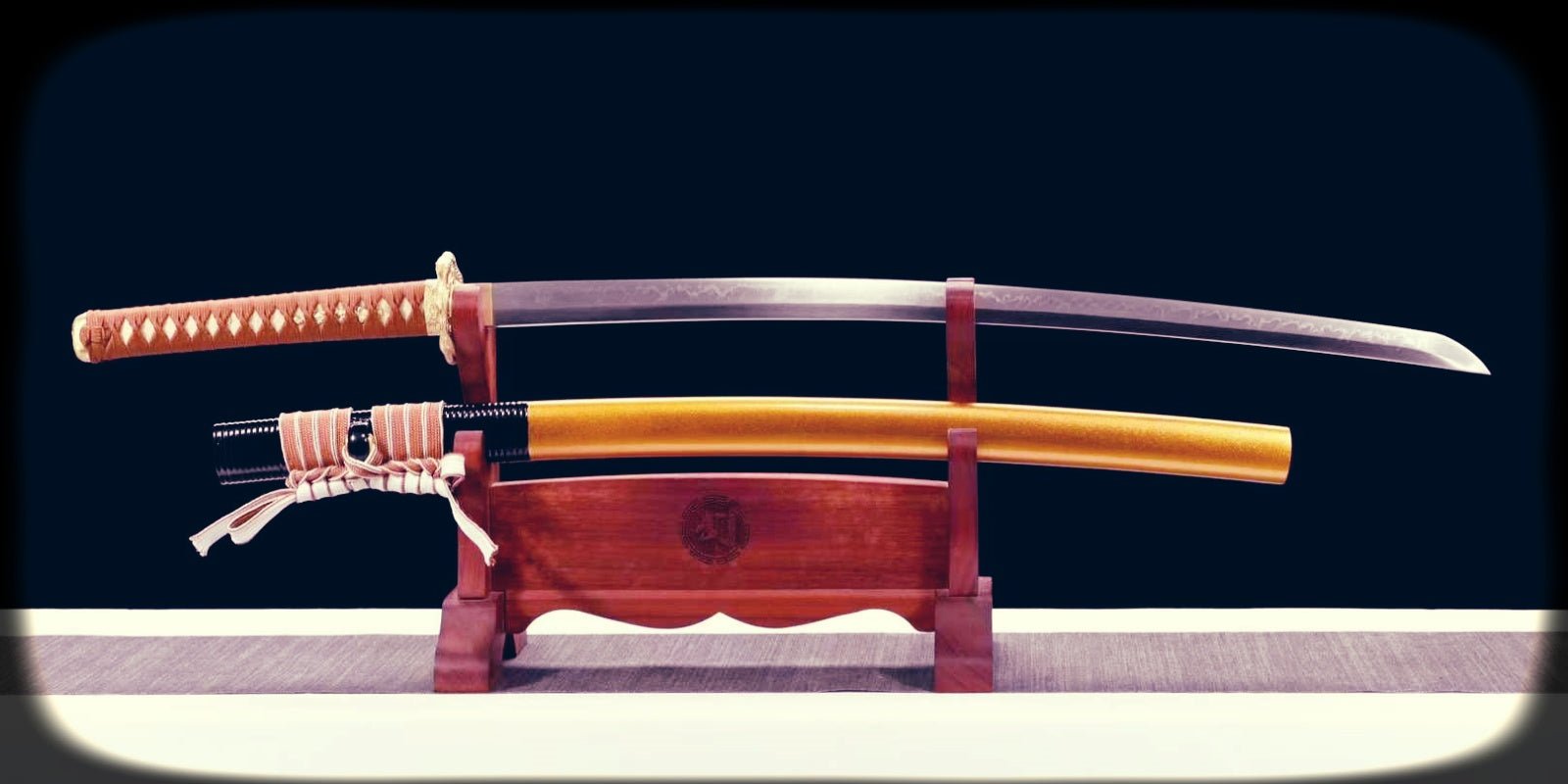Understanding the History and Purpose of the Katana
The katana originated in feudal Japan and evolved as a product of the samurai culture. By the Kamakura period (1185–1333), its curved blade replaced older straight-edged swords, improving cutting efficiency in combat. Crafted by skilled artisans using intricate forging methods, the katana came to symbolize precision, discipline, and honor.
Traditionally, its purpose extended beyond warfare as samurai revered it as both a weapon and a spiritual object. It balanced form and function, serving as a practical tool for battle and a representation of the wielder's status and beliefs. Modern enthusiasts value its artistry and historical significance.
Deciding Why You Want a Katana: Display, Practice, or Collection
When choosing a katana, the intended purpose plays a critical role in determining the right sword. Different uses require varying features to meet aesthetic, functional, or historical needs.
- Display: For decorative purposes, replica katanas with elegant finishes are ideal. These are usually crafted from materials like stainless steel for visual appeal but lack high functionality.
- Practice: Practitioners of martial arts, such as Iaido or Kendo, should consider durable, well-balanced training swords. Options include functional live blades (sharpened) for cutting practice or Iaito (blunt blades) for safe skill refinement.
- Collection: Collectors may prioritize authenticity, craftsmanship, and historical accuracy, often focusing on traditional forging methods, high-quality steel, and intricate detailing.
Each use emphasizes specific features, helping buyers match their katana to their primary purpose effectively. Understanding this distinction avoids unnecessary costs or compromises in quality.
Knowing the Difference Between Real and Replica Katanas
When selecting a katana, distinguishing between real and replica blades is crucial. Authentic, functional katanas, also known as "shinken," are made using traditional forging techniques and high-quality steel. These feature full tang construction, proper weight, and sharp, durable edges suitable for practical use such as cutting practice or martial arts training.
In contrast, replica katanas—often used for decorative purposes—are typically made from low-grade materials. They lack full tang construction and often have blunted or fragile blades. A visual clue lies in the details; real katanas frequently showcase intricate craftsmanship in the blade, tsuka (handle), and hamon (temper line).
Materials Used in Katana Blades: What to Look For
When selecting a katana, understanding the materials used in its blade is crucial to determining its quality and suitability. The material significantly impacts the blade's sharpness, durability, and flexibility.
Common Blade Materials
- Carbon Steel High-carbon steel is a traditional and popular material used in katana production. It provides an excellent balance between hardness and flexibility, allowing the blade to keep a sharp edge while resisting breakage. Popular variants include 1045, 1060, and 1095 steel, with higher numbers indicating increased carbon content.
- Tamahagane Steel Known as the traditional Japanese steel, tamahagane is made through an intricate smelting process. It is highly prized for its strength and artistry but often reserved for authentic, master-crafted katanas due to its cost.
- Spring Steel This modern material, such as 5160 or 9260 steel, offers high flexibility and impact resistance, making it an excellent choice for functional blades intended for cutting practice.
- Stainless Steel While low-maintenance and rust-resistant, stainless steel katanas are mostly decorative. Their brittleness makes them unsuitable for real use.
Key Features to Consider
- Hardness and Flexibility: Materials like 1095 steel provide superior edge retention but may sacrifice flexibility, while 1060 offers a balanced approach.
- Corrosion Resistance: High-carbon steels require frequent oiling to prevent rust, unlike stainless steel.
- Artistic and Functional Value: Handmade tamahagane blades prioritize tradition and craftsmanship, ideal for collectors rather than beginners.
Evaluating the blade material ensures buyers select a katana suited to their intended use, whether for display, practice, or cutting exercises.
Examining Blade Construction: Folded Steel vs. Modern Steel
Traditional folded steel, often associated with katanas, involves repeatedly folding and hammering the metal to remove impurities and create distinct layers, a process that requires expert craftsmanship. This layering gives the blade its signature grain pattern and a balance of strength and flexibility. However, advancements in metallurgy have introduced modern steels like high-carbon or alloy steels, which offer superior durability, edge retention, and consistent quality due to precise manufacturing techniques.
- Folded Steel Benefits: Aesthetic appeal, historical authenticity, and flexibility.
- Modern Steel Benefits: Higher strength, lower maintenance requirements, and uniform composition.
The choice often depends on the buyer's priorities—visual authenticity or performance and practicality. Transitioning considerations include cost, upkeep, and intended use.
Choosing the Right Length and Weight for Your Needs
The length and weight of a katana significantly affect its handling and suitability for the user. Selecting the correct length begins with considering your height and arm length. A katana's blade length is traditionally measured in shaku (approximately 30.3 cm or 11.93 inches). Beginners may find blades between 27-29 inches most manageable.
Weight is equally vital to ensure proper control and reduce fatigue. Lightweight katanas, generally ranging from 2-2.5 lbs, allow for easier handling and better adaptability during practice. When choosing, prioritize balance over heft to improve precision. Testing different katana sizes and weights helps determine your ideal fit effectively.
Evaluating Tsuka (Handle) Quality and Grip Comfort
The tsuka, or handle, is a crucial component that influences both the functionality and comfort of a katana. Its quality directly impacts grip stability, maneuverability, and overall handling. A beginner should prioritize a tsuka wrapped in authentic materials like cotton, silk, or leather, as these provide better grip and durability. Avoid overly loose or rigid wrapping, as it could compromise control during practice.
Examine the structural integrity of the tsuka. High-quality handles typically include wooden cores (usually hardwood or magnolia) reinforced with a full tang blade. A poorly fitted tsuka can result in imbalance or unsafe usage. Additionally, ensure the handle size fits well in the user’s hands, as an oversized or undersized grip can cause strain.
Understanding the Importance of Saya (Sheath) in Maintenance
The saya, or sheath, plays a critical role in the longevity and upkeep of a katana. Properly maintaining the katana begins with understanding the protective function of the saya, as it safeguards the blade from external elements like moisture, humidity, and dust, which can lead to corrosion. A well-crafted saya, often made of wood, facilitates ideal storage by preventing excessive friction or scratching of the blade’s polish.
Neglecting the saya’s care can result in internal debris buildup, which may damage the blade over time. Regular inspection ensures it remains clean and free from contaminants. Additionally, storing the katana in the saya during non-use preserves its sharpness and enhances its durability further.
Setting a Budget: Balancing Quality and Affordability
Establishing a clear budget is essential when purchasing your first katana, as it allows for a realistic balance between quality and affordability. Beginners should avoid both overly inexpensive options and extravagant investments that may not align with skill level.
- Lower-budget katanas (around $100–$300) often use stainless steel, which is less durable and not suitable for functional practice like cutting. These are better suited for display purposes.
- Mid-range katanas ($300–$800) typically feature carbon steel blades, offering a blend of quality craftsmanship and functionality for beginners practicing traditional techniques.
- High-end katanas (over $1,000) are custom-made or forge-folded, ideal for serious practitioners but unnecessary for beginners.
Prioritizing safety, intended use, and future skill progression ensures wise spending.
Where to Purchase Your First Katana: Trusted Retailers and Brands
Selecting a reputable source is crucial when buying your first katana to ensure quality and authenticity. KatanaSwordArt offers a wide range of katanas in various materials and styles for sword enthusiasts in Australia. Research each company’s reputation and return policies. Always prioritize quality over cost.
Inspecting the Katana Upon Arrival: Key Features to Check
Upon receiving a katana, it is crucial to meticulously examine its key aspects to ensure quality and authenticity.
- Blade Integrity: Inspect the blade for chips, cracks, or discoloration. A genuine katana should have a smooth yet sharp edge and display the hamon (temper line) clearly.
- Blade Material: Verify the steel quality—carbon steel is preferred for authenticity and durability. Avoid blades made from stainless steel for real-use katanas.
- Weight and Balance: Hold the katana to assess its balance. It should not feel overly heavy toward the blade or hilt.
- Tsuka (Handle): Ensure the tsuka is tightly wrapped with ito (cord) and feels secure. Check for proper alignment with the blade.
- Saya (Scabbard): The saya should fit snugly around the blade, preventing it from rattling or falling out.
Attention to these features ensures a reliable and well-crafted katana.
Learning Basic Maintenance and Care for Your Katana
Proper maintenance is essential to preserve the condition and longevity of a katana. Blade care begins with regular cleaning to remove fingerprints, moisture, and oils that can lead to rust. A protective oil, such as choji oil, should be applied to prevent corrosion. One should use a soft, lint-free cloth for application.
Storage requires placing the katana in a horizontal position, with the edge facing upward, to avoid unnecessary pressure on the blade. It is also recommended to regularly inspect the fittings, ensuring the tsuba (guard) and tsuka (handle) are secure. Neglecting maintenance can severely compromise the weapon's integrity and appearance.
Avoiding Beginner Mistakes: Common Pitfalls to Watch Out For
Purchasing a first katana can be daunting, and certain pitfalls can lead to disappointment or unnecessary expenses. Beginners often overlook the distinct purposes of katanas, mistakenly buying decorative swords instead of functional ones. Quality is another critical factor—choosing low-quality steel due to budget constraints can result in a blade that lacks durability or balance.
Ignoring proper blade maintenance requirements is another frequent mistake. Functional katanas demand regular care to prevent rust or damage. Shoppers may also misunderstand terminology, such as confusing different blade types (e.g., "shinogi-zukuri" vs. "shobu-zukuri"). Lastly, rushing into purchases without considering reliable sellers can lead to counterfeit or unsafe products.
Next Steps After Choosing Your Katana: Practice and Education
After selecting a suitable katana, the next essential steps involve practice and education to ensure safe handling and proper techniques. Developing proficiency requires guidance from experts and dedicated training.
Practice
- Join a dojo: Find a reputable martial arts school that includes kenjutsu or iaido in its curriculum.
- Start slow: Beginners should focus on basic kata to build foundational movements while avoiding injury.
- Regular maintenance: Learning how to clean and care for the blade maintains its sharpness and integrity.
Education
- Study history: Understanding the cultural significance of the katana enhances appreciation of its craftsmanship.
- Learn etiquette: Familiarity with blade-handling protocols fosters respect for tradition and safety.
- Explore resources: Books, videos, and workshops provide additional insights into techniques and practices.

